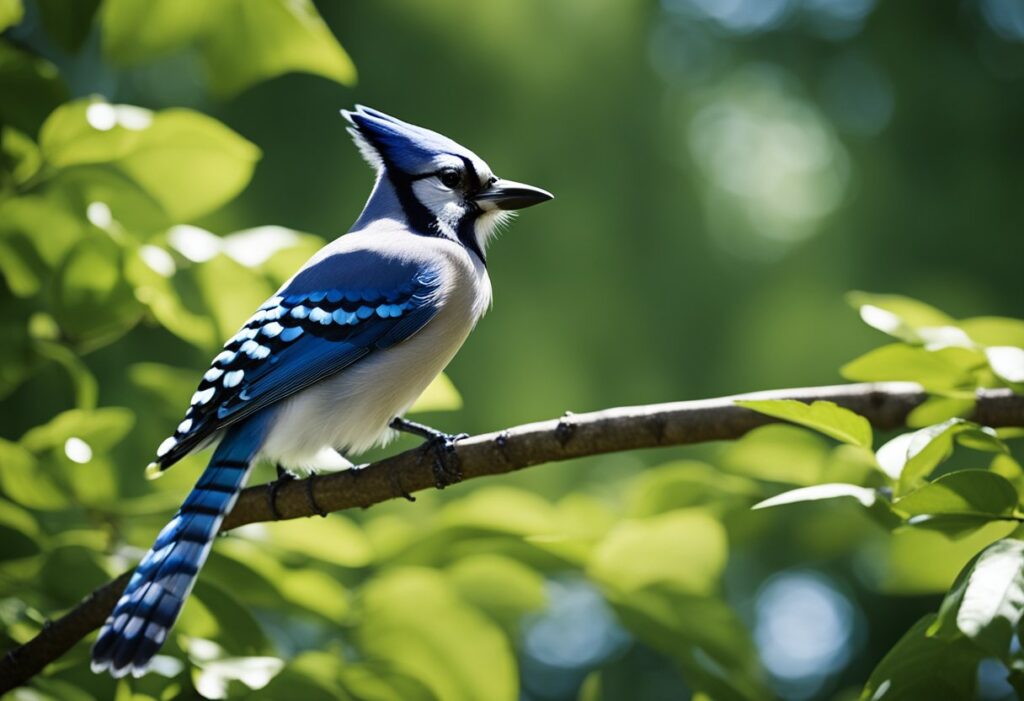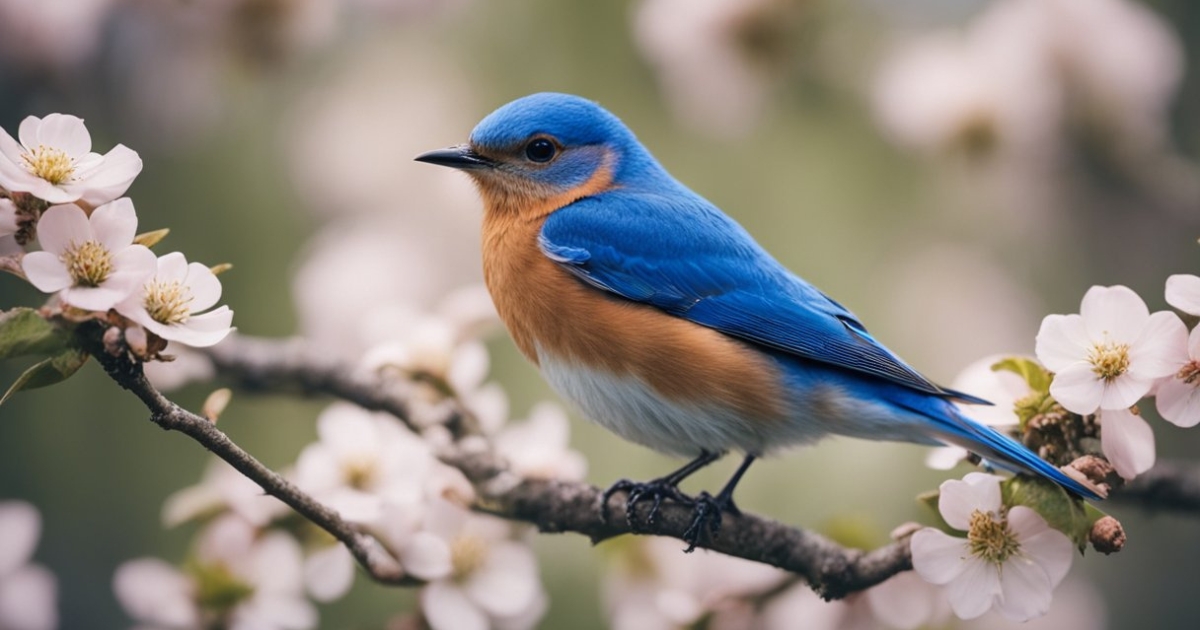Have you ever wondered if bluebirds mate for life? These vibrant songbirds, known for their stunning blue plumage and melodious songs, have captured the hearts of many bird enthusiasts. Bluebirds are not only beautiful but also exhibit intriguing mating behaviors. In this article, we’ll explore the mating habits of bluebirds, particularly focusing on whether they form long-term bonds. We’ll also compare them with other birds like cardinals and blue jays, delve into some popular bird species that mate for life, and provide insights into their nesting and breeding habits.
Do Bluebirds Mate for Life?
When it comes to the question of whether bluebirds mate for life, the answer is a bit nuanced. Bluebirds are generally considered to be socially monogamous, which means they form pairs during the breeding season but may not necessarily stay together for life. Male and female bluebirds, particularly eastern bluebirds, engage in various mating rituals that strengthen their bond during the breeding season. They often return to the same territory each year, which can give the impression of a lifelong partnership.
During the breeding season, which typically spans from March to August, bluebirds engage in elaborate courtship displays. The male bluebird will often sing sweet songs and perform aerial acrobatics to attract a mate. Once a pair forms, they work together to establish a nesting site, usually in a tree cavity or a birdhouse. Female bluebirds are responsible for building the nest, using materials like grasses, feathers, and other soft substances to create a cozy home for their eggs.
Interestingly, while bluebirds may form strong pair bonds during the breeding season, they are not immune to extra-pair copulations. This means that either the male or female may mate with other individuals outside their primary partnership. This behavior is not uncommon in the bird world and can be attributed to various factors, including genetic diversity and the availability of resources.
In summary, bluebirds do exhibit monogamous tendencies during the breeding season, but their long-term relationships can vary. While many pairs may reunite year after year, some may choose to find new partners based on environmental conditions and personal circumstances.
Do Cardinals Mate for Life?
Just like bluebirds, cardinals are often thought to form lifelong bonds. These striking red birds are known for their beautiful songs and vibrant colors, making them a favorite among bird watchers. Cardinals are also socially monogamous, forming strong pair bonds during the breeding season. They typically mate for life, returning to the same territory year after year.
Cardinals engage in various mating rituals, including singing duets and feeding each other, which helps to strengthen their bond. During the breeding season, the female cardinal builds the nest, often in dense shrubs or trees, using twigs, grasses, and leaves. The male cardinal plays a crucial role in protecting the nesting territory from potential threats, such as house sparrows and other predators.
Interestingly, research shows that cardinals can also engage in extra-pair copulations, similar to bluebirds. This behavior may be a strategy to increase genetic diversity among their offspring. Cardinals usually lay between three to four eggs per brood, with both parents participating in feeding and caring for the hatchlings.
Overall, cardinals are known for their strong pair bonds and commitment to their partners, making them a great example of birds that mate for life.
Do Blue Jays Mate for Life?

Blue jays, like bluebirds and cardinals, exhibit interesting mating behaviors. These intelligent birds are known for their striking blue and white plumage and loud calls. Blue jays are also socially monogamous and typically form long-term pair bonds. They are known to mate for life, returning to the same nesting territory annually.
During the breeding season, blue jays engage in various courtship displays, including vocalizations and playful interactions. The female blue jay is responsible for building the nest, often in trees or shrubs, using materials like twigs, grasses, and mud. Both parents play an active role in incubating the eggs and caring for the young.
Blue jays are also known for their complex social structures and behaviors. They can be quite protective of their nesting sites and are known to engage in aggressive behaviors towards potential threats. This protective nature helps ensure the survival of their offspring.
In conclusion, blue jays do mate for life and exhibit strong pair bonds, similar to bluebirds and cardinals. Their commitment to their partners and their active involvement in raising their young make them fascinating birds to observe.
5 Popular Birds That Mate for Life
While bluebirds, cardinals, and blue jays are well-known for their mating habits, several other bird species also form long-term partnerships. Here are five popular birds that mate for life:
- Swans: Known for their grace and beauty, swans are often seen gliding together on lakes and rivers. They are highly monogamous, forming strong bonds that can last for many years.
- Penguins: Many penguin species, such as the emperor and king penguins, mate for life. They engage in elaborate courtship displays and work together to raise their chicks in harsh environments.
- Albatrosses: These magnificent seabirds are known for their long-distance flights and lifelong pair bonds. Albatrosses engage in synchronized flying and elaborate courtship rituals to strengthen their relationships.
- Macaws: These colorful parrots are not only known for their intelligence but also for their strong pair bonds. Macaws often mate for life and are highly social, engaging in playful interactions with their partners.
- Turtles: While not birds, some species of sea turtles are known to return to the same nesting sites year after year, often reuniting with the same partners. Their long-term relationships are a testament to the bonds they form.
These examples highlight the diversity of bird species that exhibit lifelong mating behaviors, showcasing the fascinating ways in which animals form connections.
Final Thoughts
In conclusion, the question of whether bluebirds mate for life is multifaceted. While they exhibit strong pair bonds during the breeding season, their relationships can vary based on individual circumstances and environmental factors. Bluebirds, along with cardinals and blue jays, display fascinating mating behaviors that reflect their commitment to their partners and their offspring.
Understanding the mating habits of these beautiful birds not only enriches our appreciation for their behaviors but also highlights the importance of conservation efforts to protect their habitats. If you’re interested in learning more about bluebirds and their conservation, check out resources from the U.S. Fish and Wildlife Service and the National Audubon Society.

